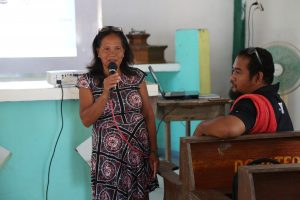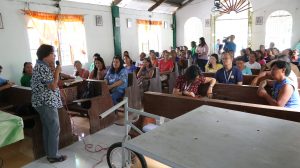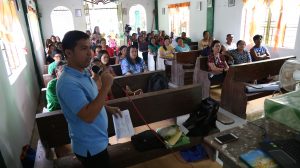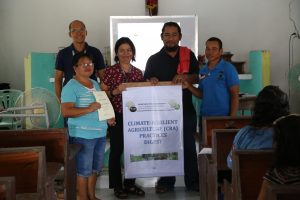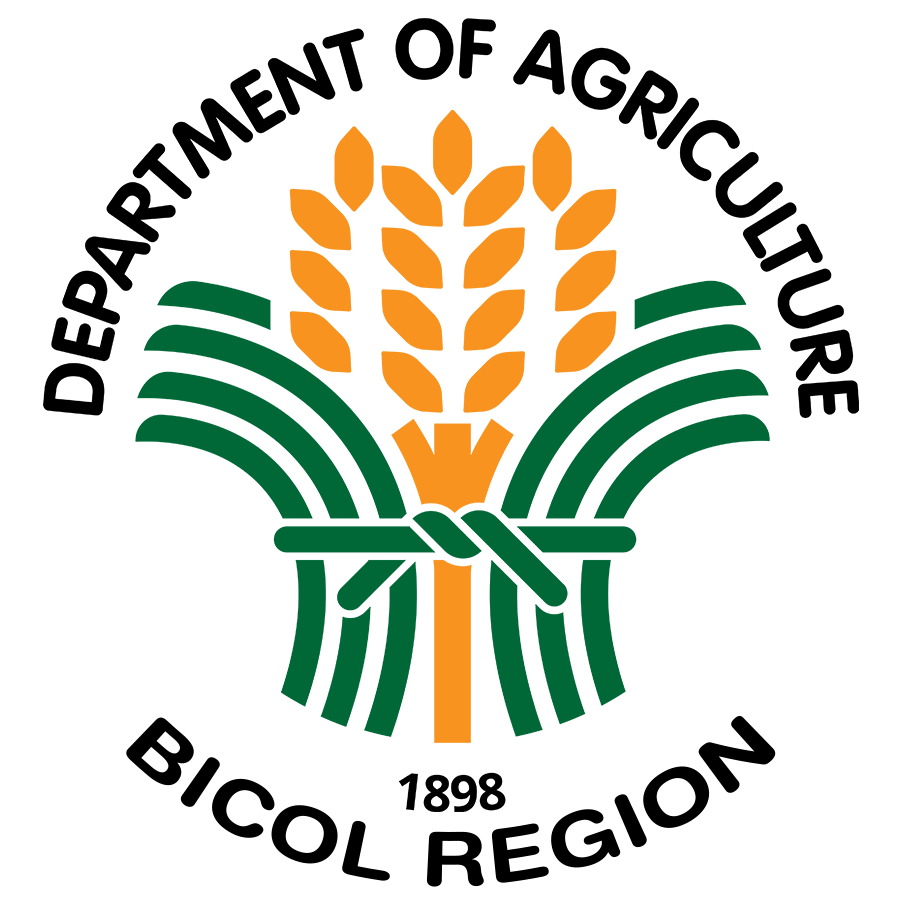PAMPLONA, CAM. SUR – Barangay, Cagbunga of this municipality a small agricultural community which is located along the Bicol River is prone to flooding whenever the river overflows and its interior sitios and neighboring barangays are prone to drought especially during the dry months. But despite their location’s vulnerability to flooding and drought , the people of this barangay are industrious, tenacious and resilient.
Through the years the residents of Cagbunga and the neighboring barangays have learned to adapt to the vagaries of weather and found ways to mitigate the adverse impact of the various factors that affect their livelihood and existence. For these they were chosen to be the pilot site for the implementation of the Adaptation and Mitigation Initiative in Agriculture Project (AMIA) of the Department of Agriculture. Their community has been dubbed as the AMIA Village as it showcases various interventions and initiatives to address climate change in agriculture.
According to Sandy, Bobier, the project research assistant, some of the interventions introduced in the community were the use of Green Super Rice (GSR) 11 variety which is known to be flood and saline tolerant; the planting of Taro varieties ; the use of Ultra Violet Stabilized (UVS )Plastic as dryer ; Crop Rain sheltering; Rice-duck integration; nipa fruit processing; use of farm weather advisory and availment of crop insurance.
Alongside with these interventions extension support via the Climate Resiliency Farmers School was conducted in the community with 80 participants for five months from June to October 2018 .
During the simple graduation ceremonies held on October 31 at the barangay chapel, the Climate Resilient Agriculture (CRA) Digest in flip chart format were turned over to the community through the Barangay chairperson Noli Panti and to the Municipal Local Government Unit through Danilo Bordon, the municipal agriculturist. Also present during the graduation ceremonies were Luz Marcelino, chief of the DA Research Division, Lorenzo Alvina, DA’s focal person on Disaster Risk Management (DRRM); and Emily Bordado; Chief of the DA Information section; other barangay officials and farmer leaders from Cagbunga, Cagbibi and Patong.
The highlight of the event was the testimonies rendered by the farmer cooperators and beneficiaries of the various interventions. Judith Imperial shared how she was able to attain a higher yield from the usual 13 cavans to 40 cavans by using the GSR 11 variety. Aurora San Juan and Rufina Sabalboro related that heir taro have yielded big leaves and have grown so tall and recovered fast even when salt water intruded into their field. Enelia Sabalboro enthused about the effectiveness and efficiency of using UVS plastic sheet placed at about 2 feet over the palay grains to hasten drying.
Rufina Sabalboro and Monina de Belen also shared their experience in rice-duck integration . The duck eggs provided food for their family . Cecilia Quipayo on the other hand tried processing the nipa fruits which used to be ignored in their community. “Dati dai pinapansin . Pwede palan source of income siya”, she bared. The Bureau of Agricultural Research through DA Regional Research Division under Mrs Marcelino has funded the project with Arlene I. de Asis providing the technical assistance and training for the women.
Monina de Belen attested that the Farm Weather Advisory provided by the project has guided her when to start planting. She noted though that the rain forecast being aired on the local tv channel does not conform with the rain forecast mentioned in the Farm Weather Advisory provided by AMIA so she is sometimes confused.
Meanwhile Norma Leosala shared the benefits from availing of Crop Insurance which somehow eased her woes whne a typhoon damages her crops. By carefully listening to the explanations of the PCIC representatives she was able to comply with the requirements. She said non-approval of claims is primarily due to the discrepancy in data provided by the claimant . “Mayo nin paboritismo sa pagtao nin indemnification kan PCIC, she asserts.
According to Alvina AMIA aims to build climate resilient communities by using new tools and developing new ways of doing things in mainstreaming climate change adaptation and mitigation strategies in the country . ( Emily B. Bordado/DA-RAFIS)
